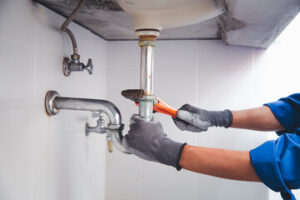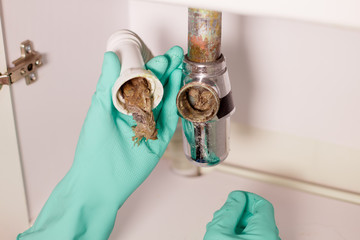Pipe Repair And Installation
A pipe is a hollow structural section that conveys liquids and gases (fluids), slurries, powders, or masses of small solids. When a pipe fails, it can result in significant costs and disruption to businesses and homes.
The first step is to identify the problem. Frequent leaks indicate a repair is needed; discolored water indicates corrosion within the pipes that requires replacement.

Pipe Repair
A small leak or break in your pipes can cause serious damage in a short amount of time, especially if the pipe is located inside your home. You should always make sure that you shut off the water before starting any pipe repair work. After the repair is finished, turn the water back on and check to make sure that the leak or break has not returned. If the issue persists, it may be best to replace your pipes rather than attempt to repair them again.
Most piping is constructed from metal, and over time, this can lead to corrosion. This is caused when the metal comes into contact with an oxidizing agent, such as oxygen or water. The corrosion will weaken the structural integrity of the pipe, leading to leaks or breaks. To help prevent this, you should perform regular maintenance and inspections of your piping system to identify any issues early on.
There are a few different ways that you can repair a pipe, depending on its material and condition. For example, if you have copper piping that is leaking, you can use a copper pipe soldering kit to repair the leak. For steel or cast iron piping, you can use a pipe coupling to seal the leak.
If your piping is made from polybutylene or lead, you should consider replacing it because these materials are known to be toxic and have an extremely low life expectancy. If you are concerned about the age of your piping, it is worth discussing options for replacement with a professional plumber.
Replacing your piping is an expensive project, but it can save you money in the long run. It will also ensure that your piping is up to date and meets current building codes. It is important to get a quote from several qualified contractors before deciding on the best option for your home.
Another big benefit of replacing your piping is that it will increase the efficiency of your piping system. Older piping is less likely to be properly insulated and can result in high energy bills.
Pipe Replacement
If your pipes are severely damaged, corroded, or experiencing multiple leaks, it’s time to consider pipe replacement. This involves removing and installing new pipes throughout your home or business to resolve the issues. It’s typically a much larger and more costly project than pipe relining.
In addition to being the most effective method for repairing major pipe damage, replacing old pipes also increases your property value and provides peace of mind. This is because your pipes are no longer at risk of bursting or failing, which can cause expensive and messy water damage to your fixtures, flooring, and other items in your home or business.
The most common pipes used in homes are made from copper, which is durable, strong, and resistant to corrosion. However, if your home is older, it may contain iron or steel pipes, which are not as durable and susceptible to damage. If you have these types of pipes in your home, it is important to have them replaced with copper to prevent future problems and failures.
Before starting any work on your pipes, it is very important to turn off the water supply. You can do this by turning off the water main valve located in your house. Once the water is turned off, you can assess the damage and begin planning your next steps.
During the pipe replacement process, your plumber will first have to remove all the existing pipes to install the new ones. This will involve tearing out drywall, floors, and other items to gain access to the pipes.
This process can take a lot of time and labor to complete, especially in large houses. It is important to hire a professional plumbing company with experience in the area. They can ensure the job is done correctly and promptly without sacrificing quality.
Another benefit of pipe replacement is that it can be done with minimal to no excavation. This is possible thanks to trenchless pipe replacement technology, which can be performed using a hydro-jetting service. Trenchless pipe replacement uses a specialized liner, called cured-in-place pipe (CIPP), to create a new pipe inside your existing one. The liners are usually epoxy-impregnated, which means they’ll be strong enough to resist future damage and leaks.
Pipe Patching
Pipe patching is a quick fix for damaged areas of a pipe that will help to keep water flowing until a plumber can arrive at the site. To perform this type of repair, it is important that the water supply valve for that particular pipe is shut off and the area around the leak is clean and dry. It is also wise to purchase a kit that includes both epoxy putty and a flexible packer (also known as a point repair carrier).
The first thing you will want to do after shutting off the water supply for the pipe in question is to inspect it closely for signs of damage and corrosion. Then, make sure that you have the right size of epoxy putty for the hole or split. A bicycle tire patch can work well for small holes or splits, but for larger ones, it is recommended that you use a sleep clamp or a hose clamp that is slightly bigger than the diameter of the pipe itself.
Once you have the proper epoxy putty and a secure clamp in place, follow the manufacturer’s instructions for applying the patch to the pipe. Most epoxy putty will set within a few minutes, but it may take an hour or more to reach full strength. It is important to be patient and not rush the process as the epoxy needs time to fully bond with the pipe.
Pipe patches are ideal for repairing damage to small sections of a pipe, as they only require that the resin solution be installed on the affected areas of the pipe. However, pipes with multiple damage points in a short distance will probably benefit more from a trenchless lining solution to repair the entire length of the pipe. It is also important for engineers to have a clear record-keeping system in place to track when patching is required, and when full lining would be the preferred solution. This will ensure that the correct decision is made for each scenario and that there is no risk of a costly mistake being made.
Pipe Cleaning
Pipe cleaning is a must for any serious smoker, as it helps to keep the pipe sanitary and able to perform optimally. A dirty pipe can clog more easily, and smoke has a harder time traveling through it. It can also hurt the taste of your smoke. There are many ways to clean a pipe, and the method you choose will depend on your personal preferences as well as the material and type of pipe.
Keeping your home’s pipes clean is the best way to avoid costly repairs in the future. Pipe damage can happen for a variety of reasons, including improper disposal of food or hygiene products down the drains, tree roots infiltrating the water or sewer lines, and extreme weather conditions. It’s important to call a plumber as soon as you notice any signs of water damage so that they can make the necessary repairs and prevent further damage.
Industrial pipelines need to be cleaned regularly as well. Without regular maintenance, they can experience corrosive damage, which can cause blockages and restrict liquid flow. By performing industrial pipe cleaning regularly, you can avoid these problems and help extend the lifespan of your industrial equipment.
One common way to clean a pipe is by using vinegar and baking soda. This is a very simple and affordable option, and it works just as well as more expensive chemical-based cleaners. The baking soda creates bubbles that scrub away grime, while the vinegar acts as a cleaning and disinfecting agent.
Another method of pipe cleaning is to use isopropyl alcohol. This is an inexpensive and effective solution, but it’s important to use a glass container that can handle the temperature of the alcohol. You should also add some coarse salt to the mixture, as this will help to scrub away particularly stuck-on gunk. Once you’ve mixed your cleaning solution, simply place the pipe into a sealable plastic bag and shake it.
Then, simply rinse the pipe with fresh water to remove any remaining residue. You can also wipe down the exterior of the pipe with a cloth soaked in alcohol, although this is not as effective and may leave behind stains that won’t come out. You should also prepare your work area by laying down a sheet or paper towel to catch any stray alcohol, and have a waste bin nearby for dirty pipe cleaners, Q-tips, and paper towels.


